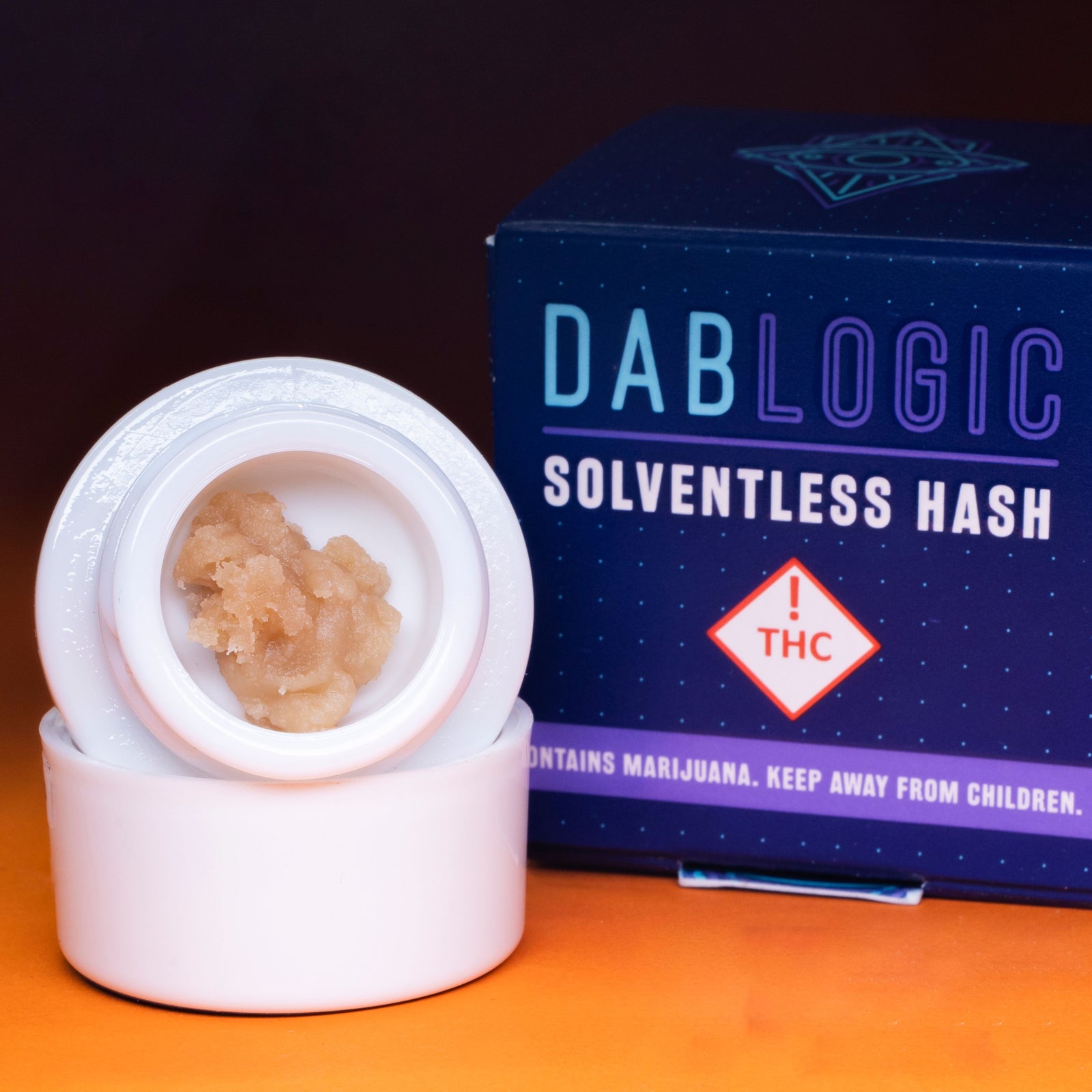How to Store Rosin to Preserve Quality and Potency

Storing rosin correctly after pressing is critical if you want it to fetch a premium price in dispensaries. As a chemical-free product that's rich in terpenes, rosin degrades quickly when left out in the open air. After one hour, you'll notice a marked change in the consistency, and after a few days, a significant percentage of the terpenes will be gone.
When stored properly, however, rosin can last for weeks and even months without an appreciable drop in potency or flavor. As a processor, doing everything you can to ensure a stable product that's as fresh when it's dabbed as it was when it was extracted will encourage your customers to keep coming back for more.
Storage Container Material

Glass is the best kind of material for storing rosin concentrates because it’s inert. If you store rosin in a silicone container, the acidic terpenes in rosin can break down the silicone, potentially contaminating your solventless extracts.
Parchment paper—while perfect for pressing rosin with a rosin press—isn't ideal for long-term storage because it doesn’t prevent airflow around the rosin. You can, however, put the rosin inside food-grade parchment paper, fold the paper, and put the folded “packet” inside an airtight glass container.
Oxygen Exposure
Air exchange leads to oxidation, which causes rosin concentrates to degrade. To prevent this, store your rosin concentrates in an airtight container like a mason jar or a jar with a vacuum seal.
Temperature
At room temperature, THC gradually converts into CBN, which makes people feel sleepy rather than high. According to research, storing hashish and marijuana at -20 °C (-4 °F) can prevent this conversion from taking place over a period of four years, so consider freezing your rosin if you need a long-term storage solution.
Light
Light exposure causes rosin's cannabinoid and terpene content to degrade very quickly, so your concentrate storage area should be dark. If storing rosin in a fridge or freezer with a clear glass door, consider covering your jars without something dark or put the fridge or freezer in a dark place—like a cellar or basement—to prevent sunlight from degrading your rosin.
Extending Rosin's Shelf Life in Dispensaries and Beyond
Let's say that you've kept your rosin in a sealed container in a refrigerator or freezer after curing and it has the precise consistency and color that you want. Now, when you go to sell that rosin to dispensaries, you'll need to ensure proper packaging, proper storage during transport, and proper storage when that rosin is displayed in the store.
Packaging

You have two main options when it comes to packaging rosin:
- Display it in a glass container to show off its color and consistency for maximum consumer appeal.
- Package it in a glass container surrounded by dark packaging to prevent light exposure in the store.
There's no right and wrong answer here, but you'll need to think it through. If you go with glass containers, you'll need to ensure that the fridge or freezer is in a dark place in every dispensary that sells your brand. If you go with dark containers, consider adding a photo of the product to the label to entice customers while still protecting your extracts.
Transportation
Freezer or refrigerator trucks are ideal for transporting rosin to dispensaries. While you still have control over the product, it’s important to do everything you can to protect the cannabinoids and terpenes.
Retail Display

Dispensaries should always store rosin in a mini-fridge or mini-freezer. If you manufacture a wide range of solventless concentrates, you might even consider providing custom-branded mini-fridges to dispensaries in a few key locations.
Customer Education
After purchasing cannabis products, customers don't always store them correctly. That's why it's vital to educate dispensaries and customers about the correct storage methods for rosin so that they can get the most out of the premium extracts you work so hard to produce.
Ideally, customers would:
- Bring an insulated bag with an ice pack to the store in which to transport their rosin.
- Put their concentrate in the freezer or fridge as soon as they get home.
- Each time they want to take out some rosin, they should allow the container to warm up to room temperature (at least 15 minutes) before opening it to prevent condensation from forming and damaging the rosin. After use, they should put the container back in the freezer or fridge.
When stored correctly from beginning to end, rosin that’s fresh when it’s purchased should still taste great several months later. It’s in your best interests as a processor to provide customers with storage tips on your packaging and also on your social media channels (if applicable).
Storing Live Rosin
You'll generally follow the same steps to store live rosin as you would for rosin that’s extracted from dry sift or dry flower, but in this case, it's preferable to freeze it rather than put it in the fridge. When stored correctly (in an airtight container in the freezer), the terpene profile of your live rosin should be essentially the same after several months as it was when it was extracted.
The Extraction Process Matters Too

We've focused here on the best storage method for rosin, but it's important to note that the starting material and rosin press temperatures you use have a lot to bear on the product's shelf life, as well.
If you start with fresh-frozen cannabis, use it to make live ice water hash, dry the hash immediately in a freeze dryer, then squish it at cool temps on a top-of-the-line rosin press, you'll end up with live hash rosin that keeps very well as long as it's kept in an airtight container in the freezer or fridge.
In contrast, rosin that's contaminated with plant material, bacteria, and mold won't keep well no matter how well you care for it after the fact. Proper storage matters immensely. However, each step before that also needs to be done right for a retail product that’s truly top-notch.
Storing Rosin Properly Is the Final Step to Achieving a Premium Extract
Solventless concentrates like rosin have the potential to give customers a flavorful experience and an exhilarating high—as long as the cannabinoids and terpenes remain intact from extraction to dab.
To protect the chemical profile of your rosin—especially live rosin—start with high-quality material, perfect your extraction process, and keep the rosin in airtight glass containers in the freezer (for long-term storage) or in the fridge (for short-term storage) after whipping and/or curing.
Then, think about packaging, transportation, and options for keeping your extracts cold in dispensaries. As long as dispensaries and customers maintain the correct storage conditions after receiving your rosin, the end users should be able to enjoy flavorful, potent hits for a long time to come.



